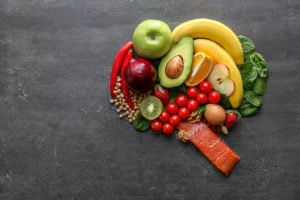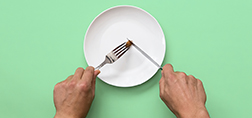
For some people, it’s an almost daily mystery. They’ll start the day with a healthy breakfast, and follow it up with a respectable lunch.
But by the time evening comes, the siren song of half a pizza, a bag of chips or a pint of ice cream lures them in.
And even if they sit down to a balanced dinner, they often lose their grip on standard portion control, eating too-large amounts of healthy foods.
Most people beat themselves up over their lack of willpower. But researchers are learning more all the time about the ways simple biology overrules people’s best intentions.
New research from the University of Georgia, for example, has isolated a specific circuit in the brain that alters food impulsivity—that thing that makes us cave in for yet another cookie.
Impulsivity, doing something without thinking about the consequences, is linked to overeating, binge eating, weight gain and obesity. (It’s also tied to compulsive gambling and drug addiction.)
For now, that information isn’t particularly useful. But in the future, it’s possible experts will be able to use that knowledge to create interventions that help us better tame those impulses.
But it does underscore that for human beings, food is more about biology than morality.
“It’s a good thing that our brains won’t let us starve,” said Sarah Flessner, a registered dietitian at Spectrum Health in Grand Rapids, Michigan. “It’s trying to protect the body from starvation.”
The problems, she said, come about because so many of us tend to approach food from an issue of restriction and deprivation.
“If we’re so focused on being ‘good’ that we’ve been living on salad lately, then when we’re presented with food that is really appetizing, the caveman part of our brain takes over.”
And the impulse becomes stronger throughout the day because willpower—the thing that makes it possible to say no at least some of the time—gets depleted throughout the day.
“Willpower is just a finite thing,” said Adelle Cadieux, PsyD, a psychologist who works at Spectrum Health Helen DeVos Children’s Hospital. “We only have so much. If we’re around unhealthy food we really enjoy, we can only say ‘No’ so many times before we give in.”
Tips to tame those irresistible biological urges:
1. Stock up on healthy foods you love.
“If most of the food we have in our house is healthy, mostly what we’re going to eat is healthy,” Dr. Cadieux said.
2. Try a schedule.
While everyone is different, Flessner said a good rule of thumb is that “most bodies need nourishment around every four to five hours, whether that’s a snack or a meal.”
And it can be helpful to create a routine, which seems to help people get more in tune with hunger and fullness cues.
3. Count to five.
While it may be hard to balance every meal across all five food groups, you should have some fruit, vegetables, grains, protein and dairy every day.
“If we’re consistently eating just one or two, that’s a problem,” Dr. Cadieux said.
Spoiler alert: You are probably produce deprived. The Centers for Disease Control and Prevention reports that only 9% of Americans get the recommended number of servings of vegetables, and only 12% eat the right amount of fruit.
4. Are you hungry? Are you sure?
Because many people have spent so much time in this cycle of restriction and deprivation, followed by overeating, they may have lost track of their ability to detect true hunger.
“Hunger is not obvious to a lot of people,” Flessner said.
Pay attention to how you feel so you can tune in to the complex biological warning systems, including hormonal hunger cues.
5. Want that treat? Go ahead.
While unrestrained eating of high-calorie foods isn’t a good idea, Dr. Cadieux said it makes sense to indulge once in a while. “Sometimes we find ourselves eating four portions of a healthy food—and consuming too many calories–because we are not satisfying the actual desire for the treat.”
The key, she said, is to be mindful about treats and aware that we are making a conscious choice. “That way, you can remind yourself, ‘Hey, I’m not going to have this sweet a coworker is offering me now, because later, I am going to have a treat that I’d prefer.’”
6. Fasting? No, thank you.
Fasting continues to be popular in the trendy world of crash diets, “but it creates this dangerous situation of putting our body into starvation mode,” Flessner said. “And it gets harder to make choices that feel good and sensible to you when you end the fast.”
7. Ask for help.
Normal eating includes a wide range of behavior. But if you suspect food is a problem in your life, ask a professional.
“If you feel like you can’t trust yourself to go to a party or on a date because you’re worried you’re going to overeat, it’s time to address the problem,” Flessner said. “You don’t have to meet any clinical definition of an eating disorder for it to have a negative impact.”
Finally, she urges people to “approach food from a place of curiosity, not from this endless cycle of good and bad foods. Then we can be a little bit more objective about deciding what we want to eat, and what’s genuinely nourishing.”
 /a>
/a>
 /a>
/a>
 /a>
/a>